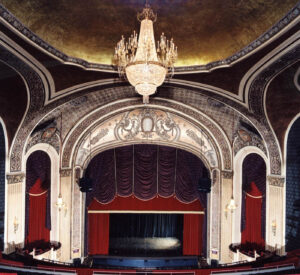
A proscenium stage remains a go-to choice for many theatres thanks to its framed design and defined audience perspective. The iconic proscenium arch creates a polished, professional look that appeals to traditional and modern productions. By clearly separating the stage from the audience, this layout allows for intricate scenic designs, precise lighting setups and focused sound engineering. For designers and directors, the proscenium stage offers creative opportunities and unique. Read on to learn how to navigate them.
Evaluating Stage Dimensions and Sightlines
The dimensions of your proscenium stage play a crucial role in set design and overall performance quality. Accurate stage width, depth and height measurements allow you to fit scenic elements comfortably within the arch.
If your stage is too shallow, it may limit the complexity of the set. Conversely, a taller proscenium arch can accommodate more elaborate backdrops and flying elements, giving you flexibility in your creative approach. Proper planning at this stage allows you to maintain visual balance and ensure a polished presentation.
Sightlines are equally important when planning a proscenium stage. It’s essential to consider angles and visibility when your audience is positioned directly in front of the stage. Even those seated at extreme angles or higher balconies should have a clear view of key performance areas. Adjust blocking, use raked platforms and employ masking techniques to improve sightlines so every audience member can enjoy the performance.
Designing the Set and Rigging for a Proscenium
Proscenium stage designs rely on the integration of set pieces, backdrops, and rigging. Each element must fit seamlessly into the visible stage area while remaining adaptable for scene changes. Forced perspective and layered scenery are common design techniques used to create depth in a confined space. Masking elements, such as legs and borders, maintain clean stage visuals by concealing offstage equipment.
You can use rigging in a proscenium stage to:
- Create depth with angled flats and painted backdrops.
- Hide lighting instruments and backstage areas.
- Incorporate rigging with manual or motorized systems to handle dynamic set changes.
Lighting Considerations for a Proscenium Setup
A proscenium stage offers distinct advantages when it comes to lighting, but it also requires careful planning. Since your audience views the stage from a fixed position, you can better control lighting plots and focus on creating visually compelling scenes. Front-of-house positions, box booms and over-stage battens provide the foundation for a balanced and even wash.
The proscenium arch itself influences shadow placement, so choose angles and intensities carefully. Strategic use of side lighting and follow spots can highlight performers and add depth to the stage, while textured lighting and gobos create visual interest.
Sound and Acoustics in a Proscenium Theatre
Sound design for a proscenium stage requires a thoughtful approach to overcome acoustic challenges. The separation created by the arch can cause an echo or uneven sound distribution. You can place speakers and acoustic panels strategically to counter that effect and produce a consistent experience for every seat in the house.
Proper microphone placement and mixing are also crucial. The goal is to deliver clear, balanced audio that supports the performance without distracting from it. By addressing potential problem areas such as dead spots or overly reflective surfaces you can create an immersive sound environment that complements the visual elements on stage.
Final Touches and Opening Night
A successful proscenium stage production comes down to detailed preparation and collaboration. Once all scenic, lighting and sound are in place, you can fine-tune each aspect during rehearsals. Adjusting blocking, refining light cues and testing sound levels help you create a polished performance.
Seamlessly integrating those elements sets the stage for a captivating experience on opening night. When every component is carefully planned and executed, the result is a performance that not only wows the audience but honors the timeless tradition of proscenium theatre.
Proscenium Stage Rigging & Setup at Tiffin Scenic Studios
At Tiffin Scenic Studios, we understand the unique requirements of proscenium stages and offer comprehensive solutions for scenic design, rigging and more. Whether you’re planning a new production or updating an existing venue, our team is here to help you achieve a professional, visually stunning performance. Contact us today to learn how we can support your next project.